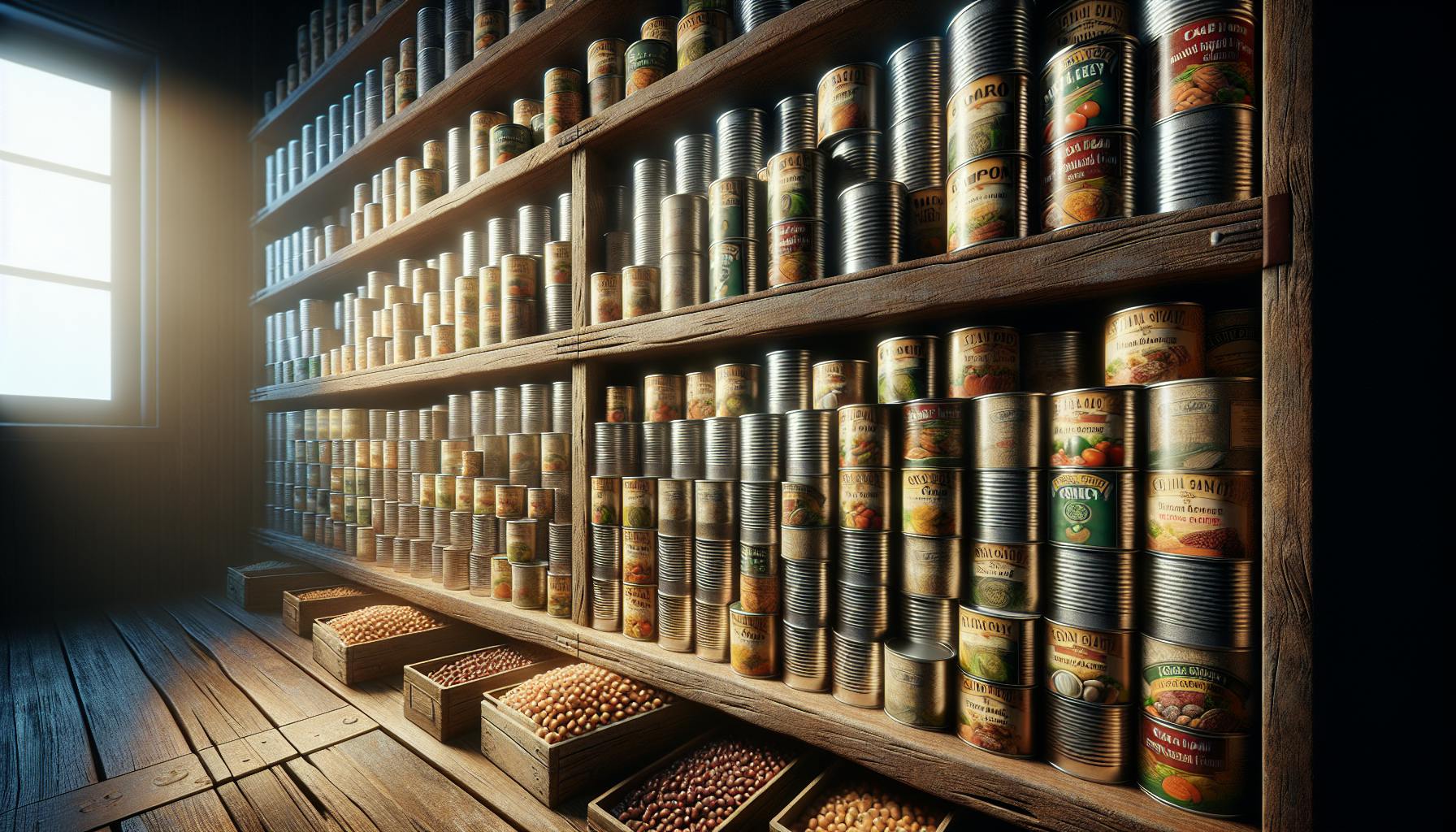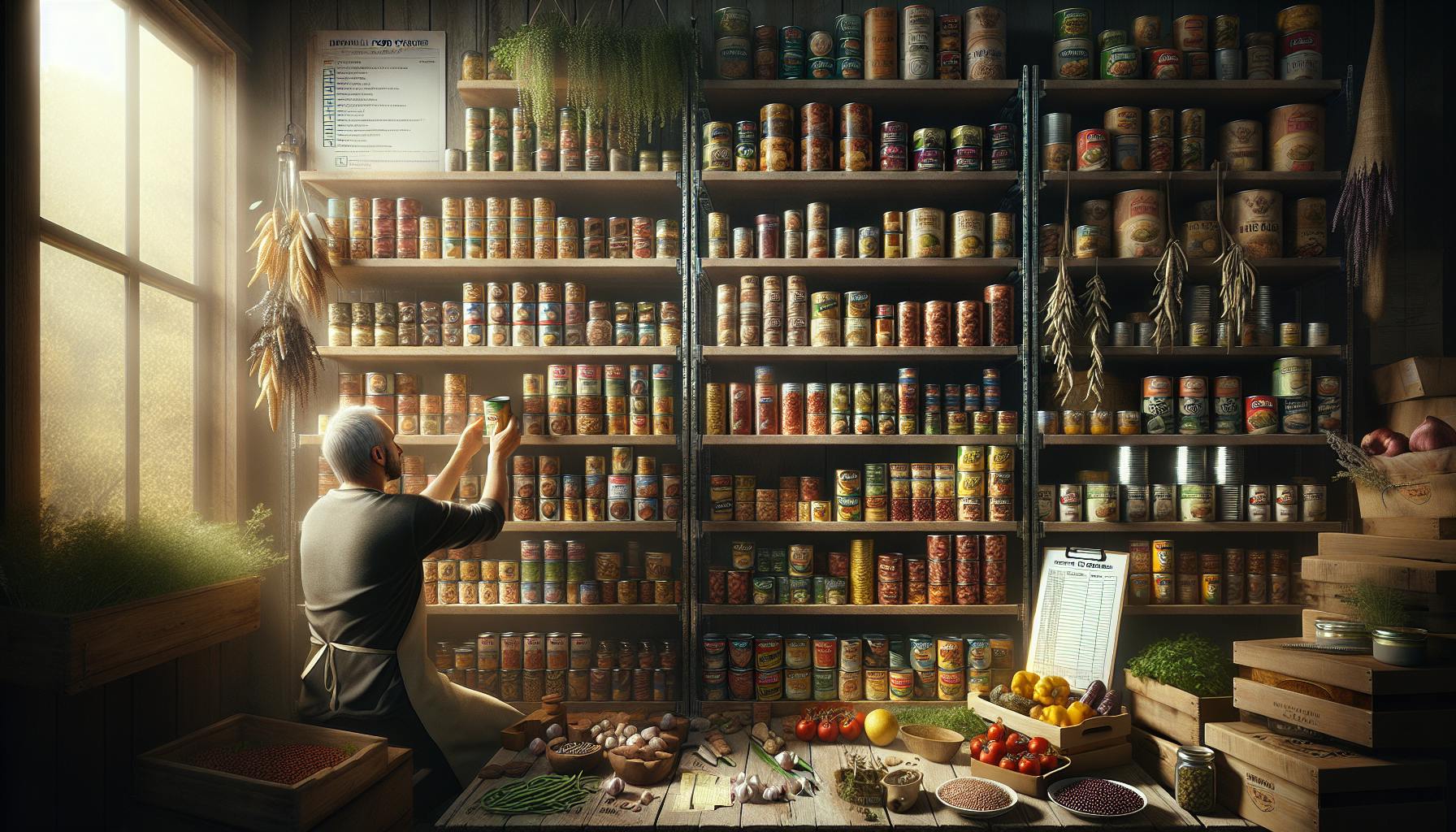Introducing Food Storage Basics for Beginners
Being prepared with proper food storage is an essential aspect of emergency preparedness. This comprehensive guide covers food storage fundamentals, providing beginner preppers with the knowledge needed to get started. Reading through will equip you with tips for maximizing shelf life, choosing suitable foods, understanding expiration dates, utilizing proper storage methods, and more. Developing sound food storage practices takes time, but starting small now gives you peace of mind knowing you have reserves in place when an emergency like a natural disaster, economic collapse or societal unrest strikes.
Understanding Why Food Storage Matters
Food storage provides a critical buffer when unexpected events disrupt normal access to fresh food from grocery stores and markets. Natural disasters like floods, blizzards or hurricanes can make re-supplying groceries dangerous or impossible for weeks. Power outages from grid failures spoil refrigerated and frozen foods within hours. Political conflicts, supply chain disruptions, or economic factors like inflation or job loss can suddenly make food costs surge out of reach. Pandemics close stores and strain supply chains. According to FEMA, having at least a 3-day supply of non-perishable food and water is recommended, but many preppers store much more. FEMA guidelines actually advise maintaining 2 weeks of supplies, highlighting the importance emergency managers place on personal reserves. The basics of food storage can transform your family from feeling vulnerable to becoming self-reliant.
Setting Your Food Storage Goals
Consider how long you want your household to be self-sustaining without relying on grocery stores, as that determines how much food to stockpile. Beginners often start with a 2 week target before expanding to a month or more. Tailor quantities to your family size, factoring in daily calorie needs, allergies, health conditions, and ages of members. For example, store more calories for active teens than seniors. Rotate and refresh supplies based on recommended shelf lives to prevent waste from spoilage. Tracking expiration dates on a master inventory helps prevent food from expiring before being used. Focus on shelf-stable foods your family regularly enjoys like canned beans, peanut butter, rolled oats and bottled water. Comfort foods like coffee, honey and chocolate boost morale in times of stress. Develop goals for a diversified, nutritious reserve supply.
Choosing Suitable Foods for Your Stockpile
Prioritize non-perishable, high-calorie foods with long shelf lives. Canned goods like tuna, vegetables, beans, and prepared soups last 2+ years unopened, but always verify 'best by' dates upon purchase. Dehydrated and freeze dried camping foods offer lightweight portability and decades of shelf life. MRE’s or Meals Ready to Eat pack long shelf lives up to 5 years in their unopened pouches, but can be more costly than homemade stockpiles. Shelf-stable staple grains like white rice, brown rice, quinoa and pasta provide carbs, fiber, and calories. Dried beans and TVP or textured vegetable protein supply plant-based protein when meat is scarce. Canned meats like chicken, spam, or turkey can provide protein as well. Shelf-stable UHT milk, peanut butter and nuts supply fats, protein and nutrients. Comfort foods like instant coffee, spices, honey and chocolate help boost morale when times are stressful. Buy familiar items you already eat rather than exotic products.
Understanding Shelf Life and Expiration Dates
The 'Sell by' date on packaging indicates the manufacturer's suggested deadline for retailers to sell the product, not for how long it stays fresh in your pantry. 'Best by' dates signify the date where optimal product quality begins diminishing, but does not indicate it is unsafe to eat after that date. With proper home storage, most unopened shelf-stable foods last 1-2 years beyond their ‘best by’ date before major quality drops occur. However, foods high in fats like nuts and oils can turn rancid quicker after opening. Check for changes in smell, texture and appearance to determine if food is still wholesome to eat. Repackage bulk items like rice, beans and pasta into smaller airtight containers after opening, as each opening exposes the remaining contents to more air and moisture. Utilize labels and dated markers to rotate your stock using a first in, first out system.
Proper Storage Methods to Maximize Shelf Life
Store foods in a cool, dark, dry area with a stable temperature around 60-70°F. Temperature and humidity fluctuations will degrade quality and shelf life much faster. Oxygen absorbers and moisture absorbers help remove air and moisture from containers to extend shelf life. Seal foods in Mylar bags, vacuum seal pouches or airtight plastic containers to protect from oxygen and moisture. Glass jars or food grade plastic buckets with gasket lids also protect food quality. Keep foods like freeze dried eggs and butter powder that require no refrigeration sealed and chilled until opened for maximum life. Then try to use opened items within a few weeks to months. Consistently implement a first in, first out system when rotating stock and using up existing inventory. Place newly purchased items in the back and move older products to the front to be used first before they expire. Maintaining proper stable conditions and using a stock rotation system will maximize shelf life of your emergency reserves.
Key Resources for Stocking Your Food Reserves
With the basics covered, here are some trusted resources to start building your reserves:
Canned and Packaged Foods
Online specialty stores like Thrive Market, My Patriot Supply and Emergency Essentials offer large inventories of canned meats, fruits, beans, vegetables, soups and more. You can often find deals on case sizes. Big box stores like Costco also sell staple canned and dry goods in bulk. Compare costs between case quantities and individual cans or pouches for your short term versus long term needs when stockpiling reserves. Always confirm 'best by' dates upon any purchase.
Emergency Food Kits and MREs
Pre-made emergency kits provide grab and go convenience, but may lack your preferred tastes or dietary needs. Mountain House and Wise Foods offer 60-day family supply kits of freeze dried foods. For lightweight portability, Mainstay energy bars and Datrex emergency food packets last 5+ years. If purchasing kits, first compare nutritional info, tastes and costs before investing in a large quantity. Consider assembling your own custom kit with your family's ideal food items.
Specialty Emergency Foods
Online retailers like Augason Farms, Honeyville Grain and Emergency Essentials sell bulk specialty survival foods like grains, beans, freeze dried produce and more. Foods like white wheat berries, white rice, dried peas, dried lentils and raw honey have shelf lives of a decade or longer, allowing you to expand your reserves. Consider adding canned butter, meats and dried whole eggs as well for essential proteins and fats. Spices and shelf-stable UHT milk enhance flavor and nutrition of basic staples.
Water Storage Considerations
Bottled water offers convenience, but water barrels allow larger volumes and avoid plastic waste. Consider water filtration too like the Sawyer Mini filter. Plan for at least 1 gallon per person or pet daily. Replace water every 6 months as it can absorb plastic chemicals over time. Because water is so critical, be sure to store extra reserves beyond the minimums.
Inventory Management Tools
Apps like The Food Storage Calculator from WeLovePrepping.com help identify gaps in your reserves for a given time period. Printable worksheets from sites like FoodStorageMadeEasy.net keep inventories organized. Use a marker to label everything with purchase dates and track expiration dates. Maintain a detailed inventory list saved on your computer noting quantities, locations and expiration dates for all your emergency food. Meal plans help cycle through and rotate food stock.
Maintaining Your Stockpile Over Time
Stockpiling emergency food provides security today, but reserves require ongoing maintenance:
Practicing First In, First Out Rotation
Consistently rotate stock using a first in, first out system. Label all containers with purchase or pack dates. Move older products to the front of shelves to be used first before they pass expiration dates. Transferring items every 6-12 months will also allow you to identify any damaged or compromised packages. Do not keep food past recommended expiration or ‘best by’ dates.
Monitoring for Spoilage
At least every 6 months, check containers for any swelling, leaks or rust. Inspect for signs of moisture or insect infestations. Discard anything that has an off odor, odd texture or strange appearance different from when originally purchased. Always use gloves when handling suspect cans. Isolate compromised foods in a sealed bag before disposing to contain contamination. Immediately replace any discarded stock to maintain reserves.
Maintaining Proper Storage Conditions
Use thermometers and hygrometers to monitor temperature and humidity in your food stockpile area. Improve air flow if needed to prevent moisture buildup. Avoid placing stock in attics, garages or basements where temperatures swing. Store emergency food reserves in an interior room with stable conditions for maximum shelf life.
Evaluating Your Needs on an Ongoing Basis
Take a full inventory at least once every 6 to 12 months, replacing expired, opened or degraded foods. Adjust your family’s reserve quantities and food choices as needs and tastes evolve over the years. Monitor burn rates as you deplete stock through normal practice rotations. Increase quantities stored if consumption outpaces replenishment. Factor in any new family members or dietary restrictions as well.
Knowing When to Toss Food Out
Do not taste food that is past printed expiration dates as bacteria and toxins continue growing over time. Discard items with odors, textures or appearance different from when originally purchased. While composting or donating expired goods prevents waste, it risks passing along spoiled food. When in doubt, be safe and throw it out. Your family’s health is too important to risk.
Final Tips for Food Storage Success
The key takeaways for developing a successful food storage stockpile are:
- Store familiar shelf-stable foods your household already enjoys and eats
- Consistently rotate stock using a first in, first out system
- Tailor quantities and food choices to meet your family’s unique needs and tastes
- Maintain proper stable temperature and humidity storage conditions
- Monitor for spoilage using sight and smell every 6 months
- Build up reserves gradually over time, starting with a 2 week supply
Properly storing food reserves takes some consistent effort, but provides invaluable peace of mind knowing your family will be fed in an emergency. Start today with the basic food storage tips outlined here to begin building your self-reliance and preparedness. Having emergency food reserves avoids panic shopping when catastrophe eventually strikes. Stay safe by being prepared.


